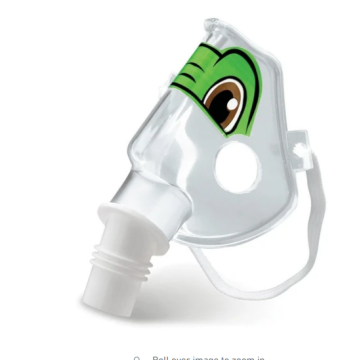![7+ Best Nebulizers for Kids [2023]](https://www.vitalitymedical.com/media/magefan_blog/BLOGS_7_Nebulizers_for_Kids.png)
Getting children to complete their respiratory treatments can be challenging, especially with loud, intimidating machines that require them to sit still until the treatment is finished. To make the process easier for both parents and children, many brands have developed nebulizers designed specifically for kids. These pediatric nebulizers are not only quieter but also more engaging, often shaped like animals, vehicles, or featuring interactive elements. By making treatment more enjoyable, these devices help manage respiratory conditions such as asthma, bronchitis, and COPD.
However, not all children's nebulizers are the same. Each model has its own features, benefits, and drawbacks, making some a better fit for certain needs. Below are the top-selling pediatric nebulizer compressors, designed specifically for children. If you're looking for nebulizers for adults, check out our previous post on 7 Best Adult Nebulizers for Breathing Relief. When choosing a nebulizer, consider your child's individual needs. If they are old enough, involve them in the selection process to help them feel excited about using their new device.
Number 1: Penguin Pediatric Nebulizer
This playful penguin-themed nebulizer comes with an optional igloo-shaped carry bag for easy storage. While real penguins thrive in cold climates, this compressor nebulizer is built to perform in warmer conditions. It operates in temperatures up to 104°F and can be stored in temperatures up to 158°F. Quieter than most adult nebulizers, it is also easy to use, allowing older children to help set it up under supervision. Designed for durability, it includes a lifetime warranty from the manufacturer.
The Penguin Nebulizer is a tabletop model that requires a power source to operate. At just over 4 lbs, it is heavier than some pediatric nebulizers.
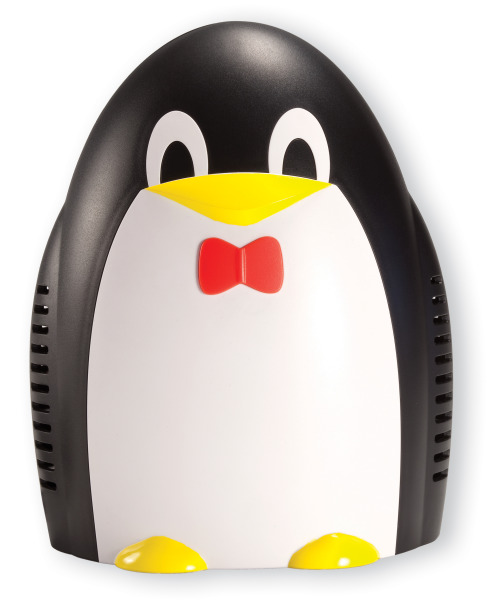
Pros: Fun design, Igloo carry case, Works in high temperatures, Quiet, Simple to use, Durable
Cons: Heavy, Non-portable
Number 2: Sami the Seal Nebulizer Compressor
Sami the Seal is a popular choice with its engaging design and complete compressor kit. It includes the SideStream nebulizer, known for its efficiency, as well as the Tucker the Turtle pediatric mask for children who prefer using one. Highly rated for durability, this nebulizer is built for continuous use. Its stable base helps prevent tipping during treatments.
While not the quietest option, Sami the Seal is far from the loudest. It is also one of the larger models, making it less compact but still effective in keeping children engaged during treatments.
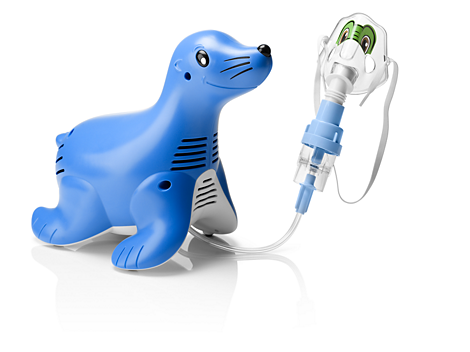
Pros: Fun design, Full kit included, Comes with pediatric mask, Durable, Designed for continuous use, Stable
Cons: Loud, Large size, Bulky
Number 3: Fish Pediatric Compressor Nebulizer
The clownfish-themed nebulizer is slightly smaller than Sami the Seal but still larger than some pediatric models. Weighing just over 3 lbs, it is the lightest option so far on this list. The simple design makes it easy to use, and even the filter is quick to change. It is built to operate in higher temperatures and can be stored in extreme conditions. Treatment times vary from 5 to 20 minutes, depending on the prescribed medication dosage.
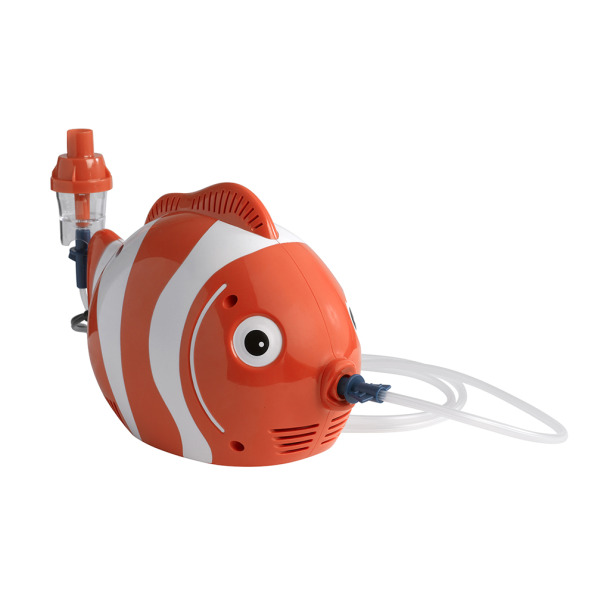
Pros: Fun design, Lightweight, Easy to use, Simple filter changes, High-temperature resilience, Efficient treatment
Cons: Large size, Less durable
Number 4: Penelope Panda Compressor Nebulizer System
The Penelope Panda nebulizer offers a fun and compact design, built to be both durable and easy to transport. Some models include a carrying case for convenience, but this varies by selection at checkout. It operates quietly while efficiently delivering medication. Additionally, for every purchase, a portion of the proceeds is donated to breast cancer research.
Due to its small size, this nebulizer can only hold 5 mL of medication at a time. If a higher capacity is needed, a larger model may be more suitable.
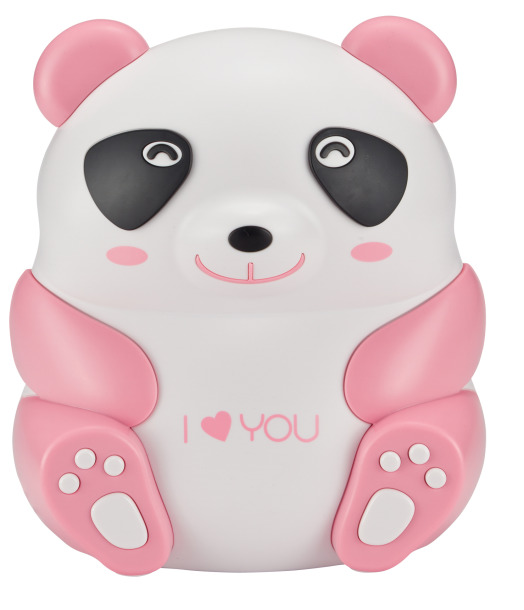
Pros: Durable, Fun design, Quiet, Efficient treatment, Supports breast cancer research
Cons: Small medication capacity, Heavier than some models
Number 5: Drive Pediatric Panda Nebulizer Compressor
This version of the panda nebulizer offers the same features as Penelope Panda but comes in a traditional black-and-white design. Unlike Penelope, this model does not contribute to breast cancer research. However, its classic look remains a favorite and continues to be one of Vitality Medical's bestselling pediatric nebulizers.
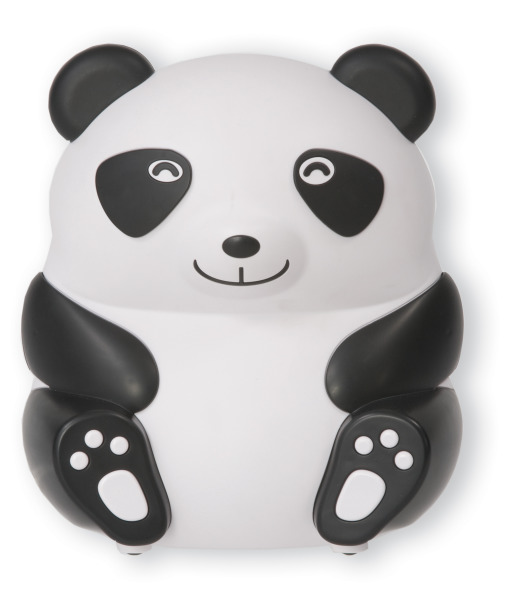
Pros: Durable, Fun design, Quiet, Efficient treatment
Cons: Small medication capacity, Heavier than some models
Number 6: Beagle Pediatric Nebulizer Compressor by Drive
The Beagle Puppy Nebulizer comes with a playful design and fun extras for dog lovers, including a carrying case with a "puppy window" and a set of themed stickers. While slightly larger, it remains lightweight for easy transport. However, it is one of the noisier options, though still quieter than full-sized nebulizers.
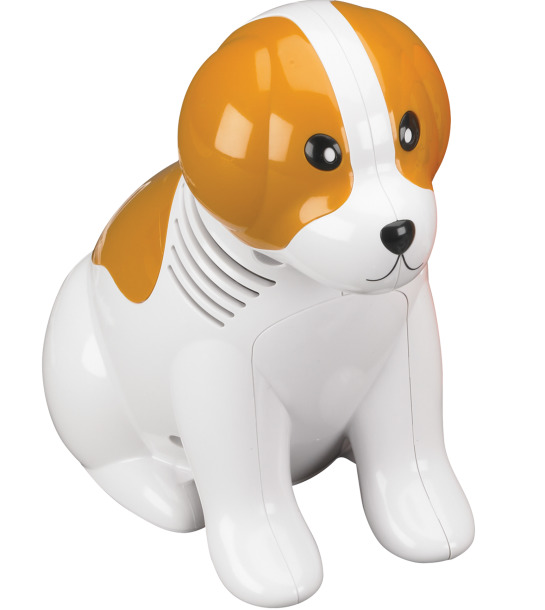
Pros: Fun design, Includes stickers, Lightweight
Cons: Noisy, Large size
Number 7: AIRIAL Express Nebulizer Compressor by Drive
Perfect for train enthusiasts, the Airial Express Train Nebulizer features flashing lights and a working ladder to keep children engaged during treatment. It is built to withstand high temperatures and is highly durable. While slightly bulkier than some models, it remains lightweight at just 3.5 lbs for easy transport.
The Airial Express is noisier than some options, measuring around 60 dB. However, its playful design helps make treatment time more engaging and effective.
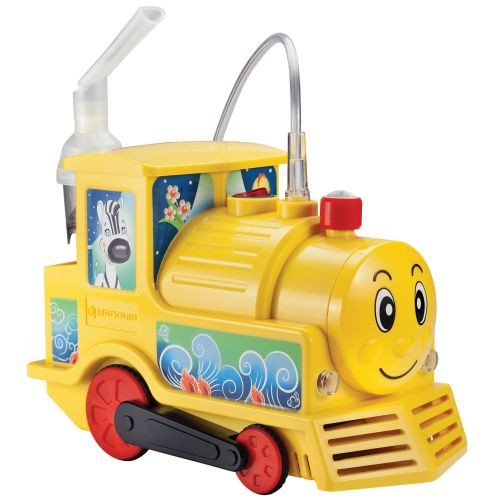
Pros: Interactive design, High-temperature resilience, Durable, Lightweight
Cons: Bulky, Noisy
Summary
Choosing the right pediatric nebulizer can make treatment time easier and more enjoyable for children. A fun, engaging design encourages use, while features like pediatric masks can enhance the experience. Consider adding a kids nebulizer mask to bring even more variety to each session. For younger children, a pacifier nebulizer may be a helpful alternative.
With the right approach, respiratory treatments can become a positive routine, supporting your child’s health and well-being.


